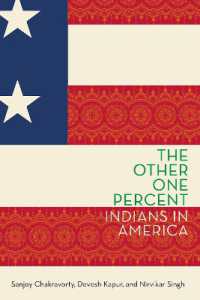Full Description
This book examines medium-sized linguistic communities in urban contexts against the backdrop of the language policies which have been implemented in these respective areas. The authors provide new data and reflections on these linguistic communities which have languages somewhere in between the majority and minority, and re-evaluate the opposition between 'majority' and 'minority'. The book focuses on seven European cities, providing detailed information on their current situation and on the corresponding evolution of their linguistic repertoire. The book aims to improve our understanding of how and why languages live and decay, and of how intercultural cities, where communities show interest in each other's culture and language, can be better developed and encouraged.
Contents
Emili Boix-Fuster: Introduction
1. Guus Extra: Mapping Urban Multilingualism in Europe: In Search of Untapped Resources in Primary Schools
2. Philippe Hambye: Competitive and Cooperative Orientations in Language Policies: A Critical Look at the Situation of Dutch in Brussels
3. Iago González Pascual and Fernando Ramallo: Linguistic Diversity in Vigo
4. Pirkko Nuolijärvi: Helsinki as a Multilingual City
5. Josep Soler-Carbonell: Tallinn, a Multilingual City in the Era of Globalisation: The Challenges Facing Estonian as a Medium-Sized Language
6. Miquel Nicolás Amorós and Francesc Jesús Hernández Dobon: Multilingual Valencia: Linguistic Destruction and Reconstruction of an Urban Space
7. Emili Boix-Fuster: Multilingualism in Barcelona: Towards an Asymmetrical Multilingualism
8. Marie Maegaard and J. Normann Jørgensen: Language in Copenhagen: Changing Social Structures, Changing Ideologies, Changing Linguistic Practices
Emili Boix-Fuster: Conclusions







